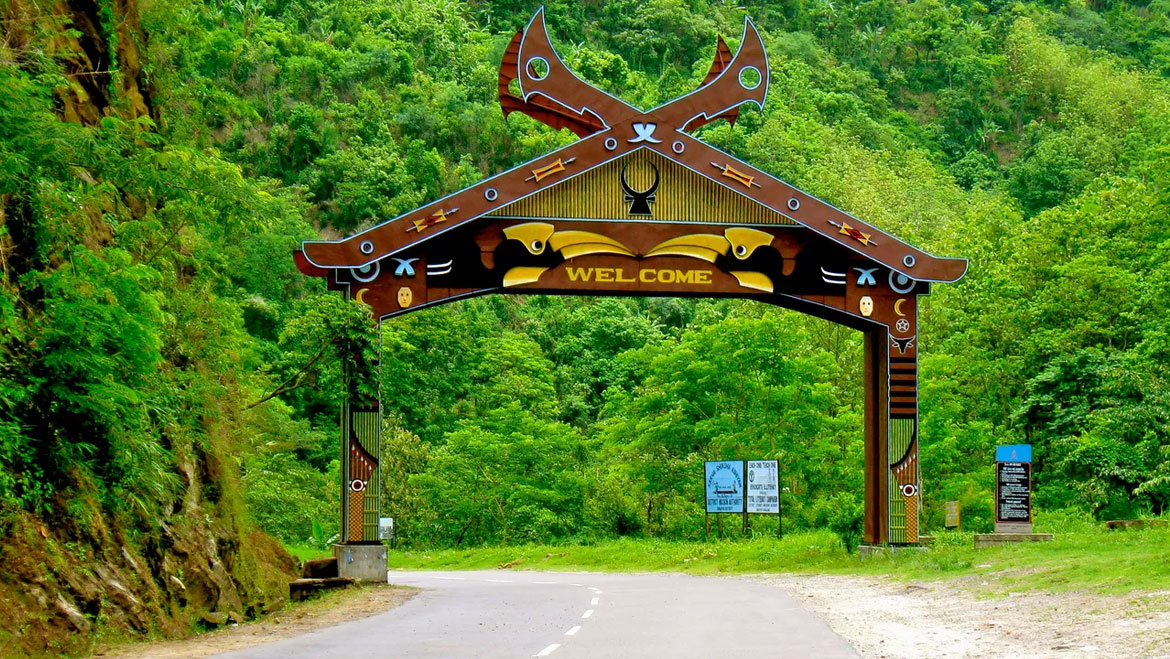Dering Lines, Nagaland: The Fascinating Tale of India's Northern Frontier
India's vast and diverse landscape is home to a multitude of intriguing and lesser-known places, one of which is the Dering Lines in Nagaland. This mysterious region is shrouded in myth and legend and holds a fascinating history that few people know about. In this article, we will delve deep into the story of the Dering Lines, Nagaland, and explore its unique features and cultural significance.
 |
| Dering Lines, Nagaland: The Fascinating Tale of India's Northern Frontier |
The History and Geography of Dering Lines
The Dering Lines are a set of fortifications located in the northeastern Indian state of Nagaland. This area borders Myanmar and is an important strategic location in India's defense against external threats. The Dering Lines were built during World War II by the British Army as a defense against the Japanese forces who had invaded Burma, which is now Myanmar. The fortifications were named after Lieutenant Colonel John Dering, who was responsible for their construction.
The Dering Lines are a series of interconnected bunkers, trenches, and tunnels that span over 30 kilometers in length. These fortifications were designed to withstand heavy bombardment and to provide cover to the soldiers stationed there. The Dering Lines were strategically located on high ground, providing a commanding view of the surrounding areas.
 |
| Dering Lines, Nagaland: The Fascinating Tale of India's Northern Frontier |
The Cultural Significance of Dering Lines
The Dering Lines hold immense cultural significance for the Nagas, the indigenous people of Nagaland. The Nagas have a rich cultural heritage that has been passed down through generations, and the Dering Lines are an important part of that heritage. The fortifications are believed to have been built on the site of an ancient Naga village, and the Nagas consider the area to be sacred.
The Dering Lines are also important in the history of Nagaland's struggle for independence. The Nagas have been fighting for their independence from India for over six decades, and the Dering Lines are a symbol of their resistance against the Indian government. The Nagas believe that the Dering Lines represent their resilience and determination to fight for their rights.
 |
| Dering Lines, Nagaland: The Fascinating Tale of India's Northern Frontier |
Exploring the Dering Lines
Visiting the Dering Lines is an exciting and unique experience. The fortifications are located in a remote area, and access is restricted. Visitors must obtain permission from the Indian Army to enter the area, and a guide is required to explore the fortifications.
The Dering Lines are a maze of bunkers, trenches, and tunnels, and exploring them is an adventure in itself. The fortifications are well-preserved, and visitors can see firsthand the intricate design and construction of the bunkers. The trenches are deep, and the tunnels are narrow and winding, making it easy to imagine the soldiers who once lived and fought there.
The Future of the Dering Lines
The Dering Lines are an important part of India's military history and the Nagas' cultural heritage. However, the fortifications are in danger of being lost to time and neglect. The area is remote and difficult to access, making it challenging to maintain the fortifications.
There is also a growing concern that the Dering Lines may be lost to development. The Indian government has been pushing for infrastructure development in the area, which could threaten the preservation of the fortifications.
 |
| Dering Lines, Nagaland: The Fascinating Tale of India's Northern Frontier |
Conclusion
The Dering Lines in Nagaland are a unique and fascinating piece of Indian history. The fortifications are a testament to the ingenuity and resilience of the soldiers who built them and the Nagas who consider them sacred. Visiting the Dering Lines is an adventure, and exploring the fortifications is an opportunity to step back in time and witness firsthand the history of this region. However, the future of the Dering Lines is uncertain, and it is up to the Indian government and the Nagas to worktogether to ensure the preservation of this important cultural and historical landmark.
read more : Bhangarh Fort in Rajasthan
FAQs
Can anyone visit the Dering Lines in Nagaland?
A: No, visitors must obtain permission from the Indian Army to enter the area, and a guide is required to explore the fortifications.
What is the significance of the Dering Lines for the Nagas?
A: The Dering Lines are believed to have been built on the site of an ancient Naga village, and the Nagas consider the area to be sacred. The fortifications are also important in the history of Nagaland's struggle for independence.
Why were the Dering Lines built?
A: The Dering Lines were built during World War II by the British Army as a defense against the Japanese forces who had invaded Burma.
Are the Dering Lines in danger of being lost?
A: Yes, the fortifications are in danger of being lost to time and neglect, and there is a growing concern that they may be lost to development.
What can be done to preserve the Dering Lines?
A: It is up to the Indian government and the Nagas to work together to ensure the preservation of the fortifications, through measures such as increased funding and protection laws.

Post a Comment